Maybe you thought you’d escape political and social issues by turning to the latest issue of Bovine Medicine. Practical, science-based information about medical aspects of cow-calf operations, mastitis, job opportunities for bovine veterinarians – useful and soothing, no?
Not necessarily.
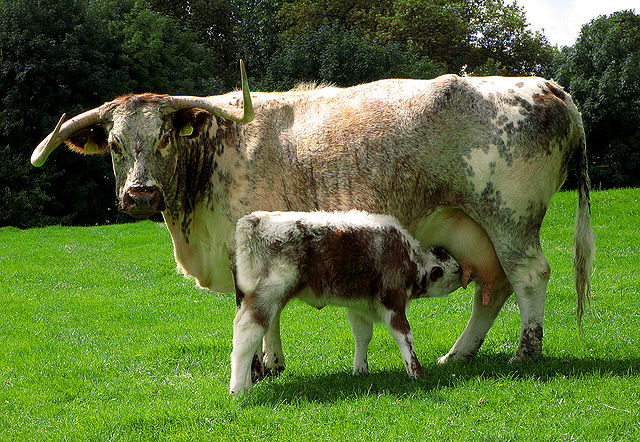
Common English words for one bovid designate sex because we focus on whether we can get milk from them. (English Longhorn.)
Sure, that kind of stuff is there. Also “Drivers of Direction,” an economic analysis of the recent AABP (American Association of Bovine Practitioners) study on factors that affect career decisions. Factors other than pay. In other words, why do people graduating from vet school decide to become – or not to become – doctors for cattle?
The pay for “food-animal practitioners” tends to be good, better than other areas of vet medicine. What else could there be besides money? Huh, what do the experts say?
Here’s a passage from “Drivers of Direction”:
“Potential… factors include the nature of the practice itself, as well as how the work is viewed. Male veterinarians might be more inclined to move toward male-dominated environments—a trend that could continue to reinforce the perception of a masculine world…. Female veterinarians might find it more interesting to work with small companion animals whereas male colleagues prefer to be outdoors among large animals.
“The choice might also be related to the location of patients. Companion animals are more concentrated in urban and suburban areas while large food animals are more concentrated in rural areas, and men tend to be more flexible than their female counterparts when it comes to relocating to the types of places where the demand for food-animal veterinary services is high.”
Female veterinarians might also find these suggestions ridiculous and insulting and oh yeah NOT BASED ON DATA.
SorryWatch was amused by comments on the Scary Mommy blog. “Hold your horses. Did we fall asleep and wake up in the 1950s?” It includes great photos from Sunrise Veterinary Service in Texas showing female vets dealing with large animals. On a tweet showing such a vet interacting with a male alpaca – outdoors! – Scary Mommy snarks a warning “Because it’s a good idea to piss off a woman who can castrate you.”
Actually the alpaca is adorable and not very big, but other photos feature quite large cattle and moose. One vet tweeted a photo of herself with a cow, captioned, “If I squint hard enough, she looks like just like a puppy, therefore making my job much more bearable.”
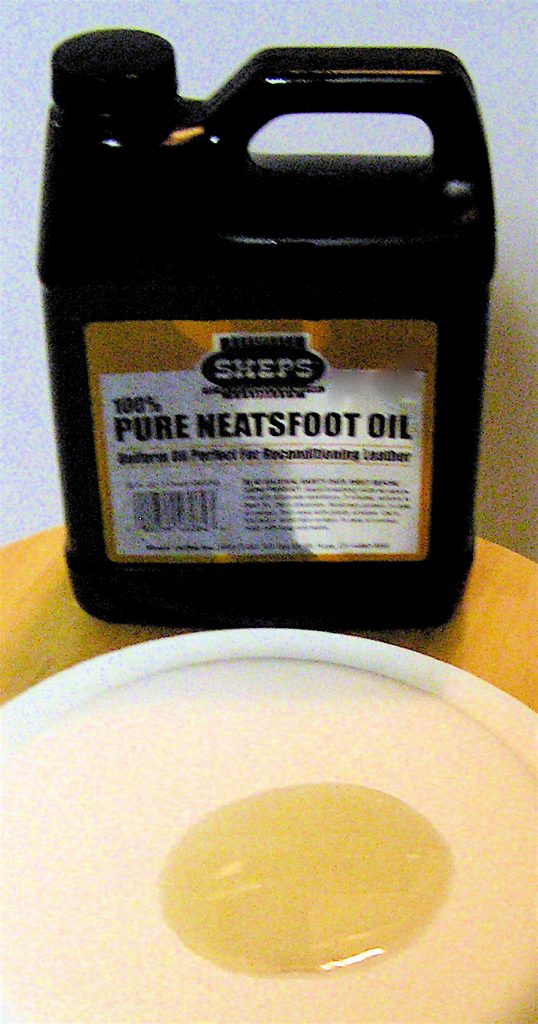
Neatsfoot oil. Used on your fine leather products. Made from bovine shins. Irrelevant whether those are boy shins or girl shins.
Before we get to the apology, a linguistic note. Writing about cattle, at least in English, makes it clear that all common words for individuals are gendered. A cow is not a male, a steer is not a female, and there’s no common word for just one that doesn’t tell you whether or not it gives milk. Hence “bovine.” Or “bovid.” Also, in some places, beast, cattle beast, critter, or beef critter. Sumac wants to revive the archaic word “neat” for just one cattle-type animal.
The AVMA posted this on their Facebook page:
To our veterinary colleagues:
The AVMA sincerely apologizes for a paragraph contained in… an analysis of the 2016 AABP-AVMA study of factors other than salary that impact career decisions. Instead of presenting an objective analysis, this paragraph played into and perpetuated antiquated male and female stereotypes. This paragraph was a deviation from the AVMA’s own diversity policy and, most importantly, doesn’t demonstrate the respect we have for all of our members.
Economic analysts want to be able to explain why they see the results they do. Explanations should be based on data. In this case, there was no data or analysis that would support a statement regarding gender preferences across the bovine segment of our profession. It’s the job of the AVMA’s Economics Division to collect data, do a careful analysis, and then present information in an objective fashion so that it serves the profession in finding solutions to challenging economic problems. This case represents a “fail” in that effort. The AVMA apologizes and has requested a retraction on the article.
Like a family, we are here to support you in all that you do. Unfortunately, as it also happens in families, we make mistakes. We know this was a significant one. We are deeply sorry.
Veterinarian Amber Domino Labelle (who’s worked as both a large animal and a small animal doc) brought this to our attention. She writes, “I think the apology was objectively good, and I appreciated the direct acknowledgment of their mistake.
“The last paragraph is really disappointing, because it feels like an emotional call to forgive this mistake because we are ‘family.’ We aren’t family. We are a professional organization. I don’t owe the AVMA the same type of relationship I owe my spouse or my sister. I expect them to relate to me as a professional. That type of emotional appeal feels fraught with gendered-stereotyping. Would a male-dominated organization ask its membership to forgive a mistake because they were family?”
Labelle also knows some recent AVMA history that led to another apology. In 2016 they published a salary calculator for new graduates. Cool! You can see what you should expect to make, so you know what to ask for! If you identify as a woman, the salary calculator instructed you to automatically deduct $2,300 from your salary.
That’s cold.
The apology for that one read:
The AVMA sincerely apologizes for any misunderstandings regarding the gender wage gap resulting from the recent online release of its New Graduate Starting Salary Calculator. Although this calculator was debuted during the March 2016 Student AVMA Symposium to rave reviews, in retrospect we realize that the difference between its in-person debut and broader release via internet was context—and we failed to sufficiently provide that earlier.
‘Those scratches? I have no idea. Why don’t you prescribe supplemental food and see if they clear up?’
The inclusion of gender as a factor affecting starting salary is NOT an indication that it is acceptable for female veterinarians to be compensated less for the same work. In fact, the AVMA firmly believes in—and will continue to advocate for—equal pay for equal work. The reality is that gender was identified by analyzing data collected from senior veterinary students over the past 15 years as one factor that is statistically significant in predicting the starting salaries of new graduates….
You should be upset over the gender disparity in starting salaries, just as we at the AVMA are upset… Unfortunately, it’s a reality, and one we have reported on in the past, just never in calculator format. As a profession, we must find a way to better understand and address the gender wage gap. The AVMA actively encourages students who use this calculator to… utilize all the information gained to strategically advocate for themselves during salary negotiations. This is especially true for women. We hope that employers will… reflect on any unconscious biases impacting salary negotiations and hiring practices. As for the AVMA, we will continue to investigate why the gender wage gap exists so that actions may be taken to help all of us, as a profession, close it….
That’s a terrible apology. We were taken out of context! You misunderstood! We just report the facts, ma’am. They loved us in Iowa!
When you discover an unfair reality like a gender- or race-based salary disparity, you do not tell people literally to enter it into their calculations of the salary they can expect. (Don’t feel less worthy, ladies – it’s just that you’re ladies. Hey, it’s the reality.) You tell people NOT to base their expectations on it. Also notice the gender binary here; non-binary people don’t even get consideration in this calculator.
By the way, why don’t more women go into bovine medicine? SorryWatch does not know. A female (equine) vet we talked to said of bovine practice, “It’s production medicine.” A.k.a. herd health. That is, the vet’s focus is not on individual neats – Elsie, Elmer, Bossie, or Ferdinand – but on the herd and the costs of production. Beholding a steer with an injured eye, the cheapest solution might be to stitch the eye closed, rather than spend time and money restoring vision to the eye.
Not everyone who becomes a vet because they love animals might be drawn to production medicine. Yet that possibility also invokes a stereotype – a ‘women are sweeter’ one. Labelle points to possible systemic factors. Are experienced male bovine practitioners less likely to mentor aspiring women? Do bovine medicine jobs offer less flexibility to women with young children who want to balance recovery from childbirth, breastfeeding, and childcare? Are women discouraged from entering bovine medicine by sexual harassment in male-dominated agricultural settings?
Could these factors affect anyone’s career choices? We don’t have any data for that. But the authors of “Drivers of Direction” don’t seem to have data either.
Just silly sexist guesses.

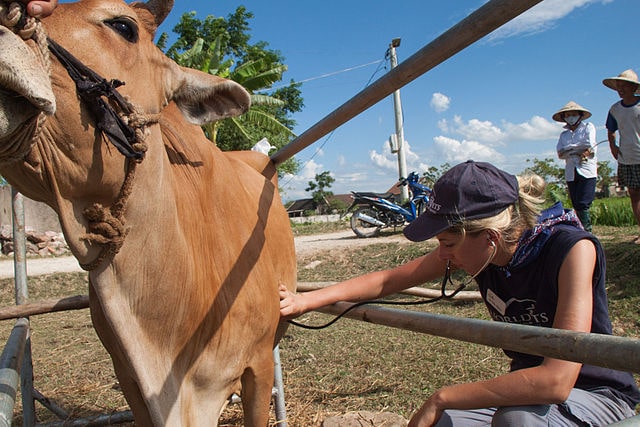
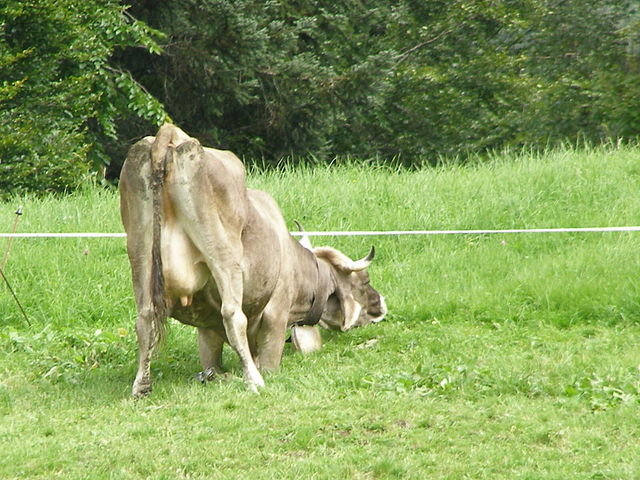
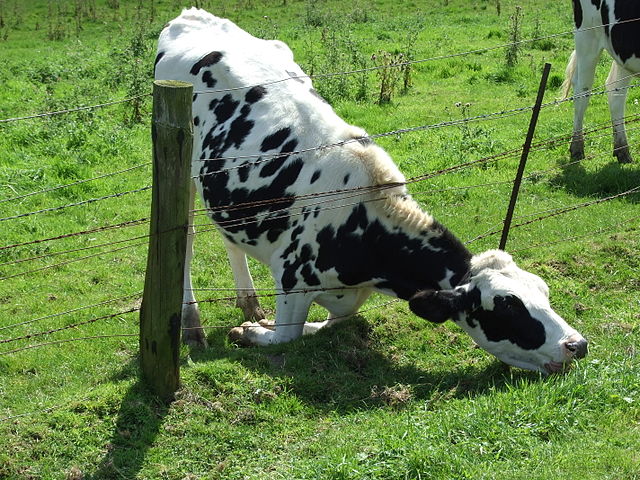
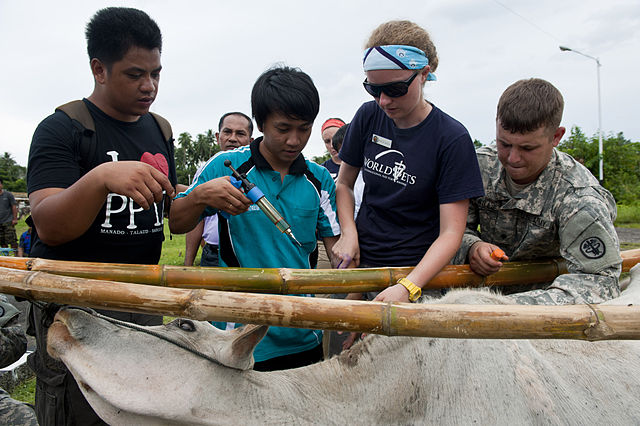
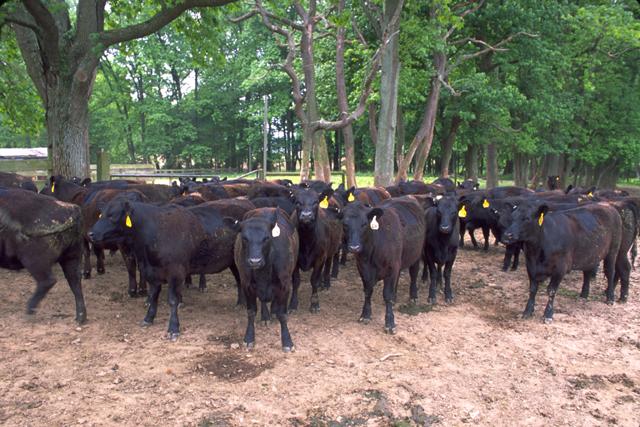

Oh, this. So dumb. I have THREE friends who are female and veterinarians and TWO of them are large animal vets. I have sighed with them through their experiences on the field, where farmers have actually asked them if they could do the job, because they are small or short or whatnot, and … wow. The sexism, it is real. That it flows back to the AABP-AVMA is… depressing, and in truth, what REINFORCES the farmer’s stupid attitudes. Shame all round.
I grew up in production ag. and meant to become a large animal vet. At first our herd health vets were a married couple (man/woman) who took me seriously, talked about microbiology, took me around to other farms. They moved away, and our new vet would say why did I want to wear a coverall, didn’t girls like pretty clothes? I would never have admitted it bothered me, but I ended up not pursuing that career.
Thanks for this wonderful post and blog (and the discussion of bovine singular!).
Thank you, and wow. That’s a perfect example of a male established practitioner not mentoring — REVERSE- MENTORING — an aspiring female.